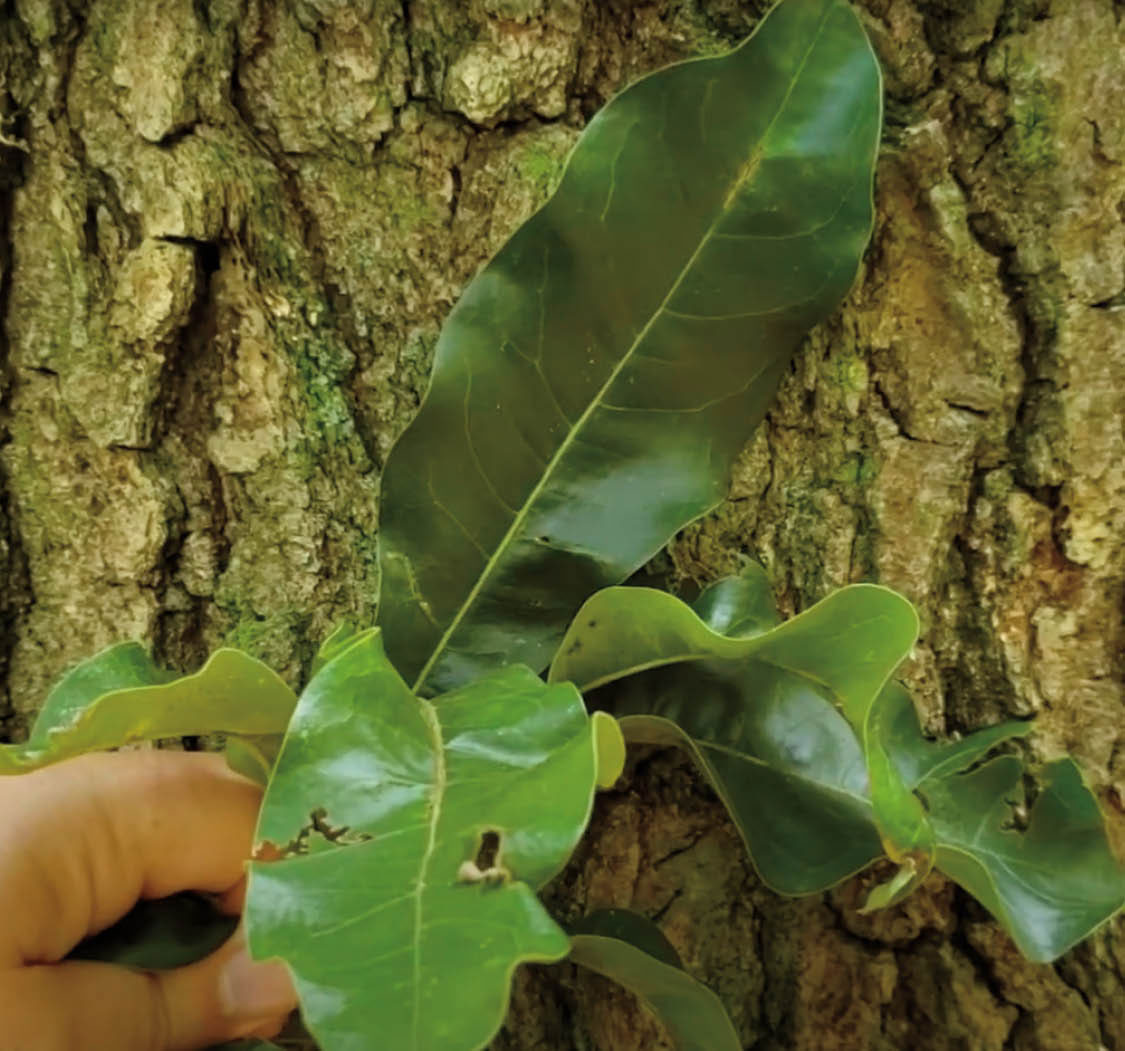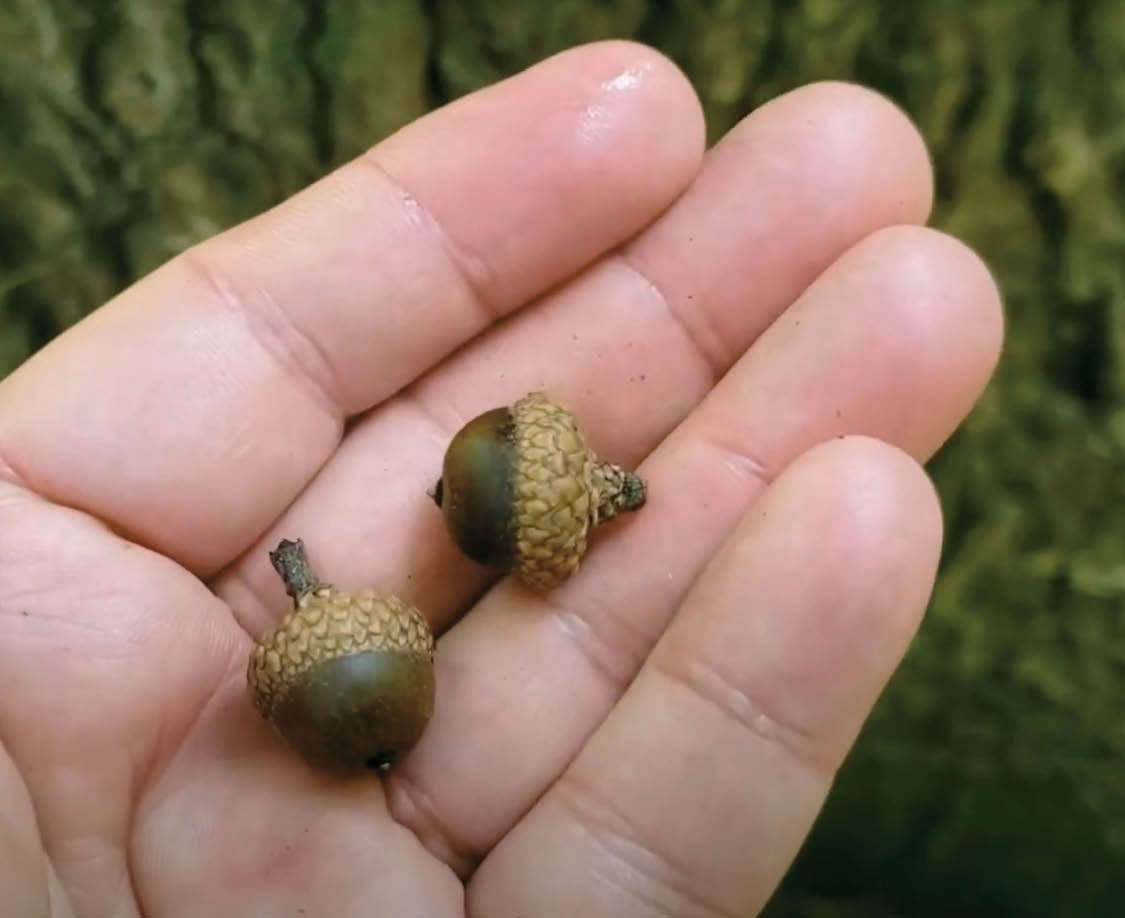ID That Tree – Shingle Oak
On this edition of ID That Tree, we’re going to introduce you to a native Indiana oak, that from the leaves, might not suggest oak to you at all. This is shingle oak, and shingle oak is our only native oak with entire leaf margins meaning there are no lobes or teeth on the margin of the leaf.
Most of our oak species have some lobing on the edges of the leaf. This is a member of the black and red oak group of the oak family, and we can tell that because there is a little bristle tip at the end of the leaf, the acorns mature over a two-year period, and it does have dark bark as is typical for most of the red and black oaks. Its leaves are shiny, and as is common with the oaks, we do typically have a terminal bud cluster. Oak species commonly hybridize by pollinating across species. The bark on this tree suggests maybe a little bit of a cross between black oak and red oak. Long running ridges tend to be a little more blocky. Shingle oaks tend to hang on to some of their lower dead limbs. It was called shingle oak because historically they would take sections of this tree and split it out to make wood shingles.
The acorns on shingle oak relatively small cap covers a significant amount of acorn and the acorns gradually turn relatively dark before they drop out of the caps if they’re good and sound. Unsound acorns have a tendency to fall off of oak trees without releasing from the caps and so this small acorn does make it available to several species of wildlife.
All in all, it is an interesting oak native to Indiana, the only one with no lobes and entire margins on the leaves and has a history for wood products use of making shingles as well. To view a video about Shingle Oak and much more, visit https://www.purdue.edu/fnr/extension/resources/videos/.
Lenny Farlee is an extension forester with the Hardwood Tree Improvement and Regeneration Center at Purdue University. Prior to the HTIRC, Lenny worked with private landowners as a district forester for the Indiana Division of Forestry for more than 15 years.
